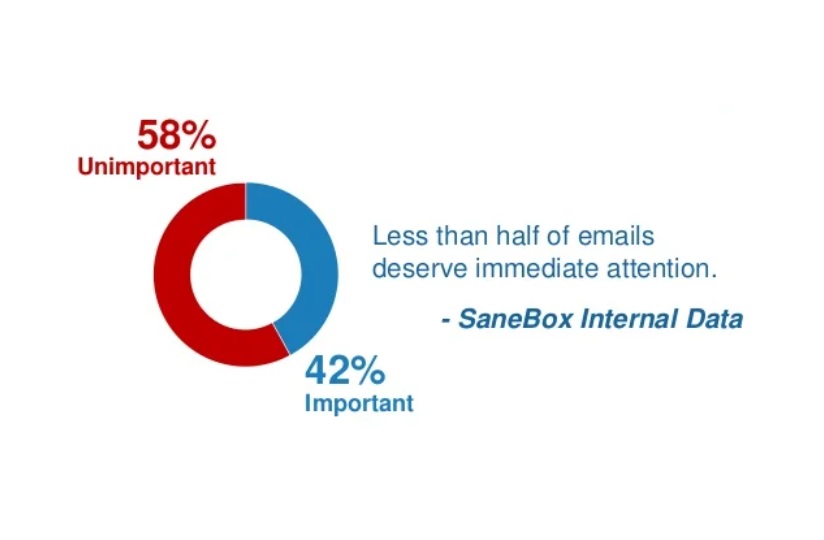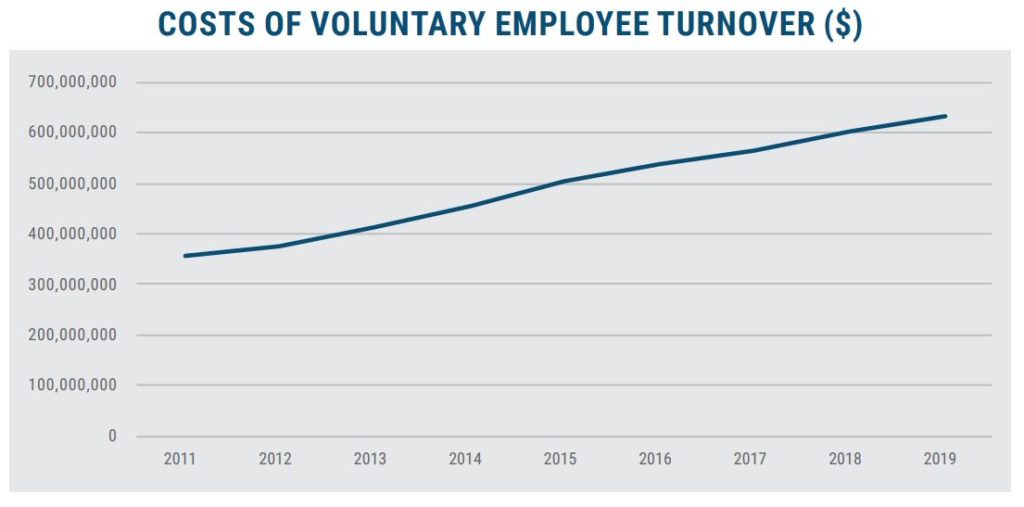With hybrid working here to stay, communication skills have become central to leading and managing teams that work productively together. With 96% of people thinking that businesses they deal with could improve communications there’s room for improvement. These business communications can be the difference between poor employee engagement and public relations or an effective business with a clear chain of command and a sense of teamwork.
What Is Business Communication?
Immediately, you may be picturing video conferencing calls, masses of emails and the occasional face-to-face meetings. However, business communication includes so much more. Anything that means you share information between individuals, both internally and externally is part of business communications. Therefore social media, a human resources department, even body language and non-verbal communication can be understood as business communications.
Poor communication comes from a lack of communication strategies and often assumptions of what other team members would say or do. This puts your business at risk of limiting the flow of information, especially internally, making communication processes ineffective and creating silos. This isn’t what a successful business looks like, so addressing your business communication is key.
Different Types of Business Communication
Upward Communication
A form of internal communication, upward communication moves up the chain of command. This might be team members providing feedback and reviews to their team leader or employee engagement surveys on how the business can best support them. Having the communication processes available to promote upward communication is crucial in giving a clear picture of how projects and strategies are playing out to those in management roles or stakeholders.
Downward Communication
On the other side of the coin, downward communication allows those further up the chain of command to share information with employees. This is typically used to inform team members of new procedures or processes required, or to communicate the outcome of managerial decision-making meetings which affect teams and individuals.
Downward communication can help keep team members united with the same strategy and provide clear aims for the business.

Lateral Communication
The most common form of internal business communications, lateral communication is the flow of information between team members and inter-departmentally. These channels of communication prevent the creation of information silos, allowing your public relations team to know about your marketing strategies as well as ongoing sales discussions. Lateral communication helps your business to work as one, keeping all team members in the know.
External Communication
Of course, engagement with customers, clients, and all those externally that regularly interact with your business is a significant part of your business communications. This method of communication may not follow the usual business processes, happening outside of corporate emails and video conferencing. Instead, external communication is flexible with its time frame, recipients, and format. However, it is important to maintain, whether done face-to-face or online.
Methods of Business Communication
Web-based Communication
This channel of communication uses web-based communication apps and software, including emails and instant messaging, facilitated by platforms such as Slack. These send messages using an internet connection to any number of recipients through team messaging without interrupting their workflow or those around them. Web-based communication also doesn’t rely on being in the same space, making it ideal for connecting with remote workers or clients.
Telephone Meetings
Where verbal communication is needed, perhaps in contexts where the tone of voice can be important, yet meeting face-to-face is not an option, telephone call meetings are a great comms option. Using VoIP can secure your connection, meaning you can get straight to the point without worrying about dodgy signals interrupting your meeting. Telephone meetings work best within a shorter time frame, to share information with individual team members.
Video Conferencing
Video conferencing has become one of the main types of business communication with remote workers and clients. An alternative to face-to-face meetings where this isn’t possible, they enable participants to connect from multiple locations or time zones. Unfortunately, the flow of conversation is still limited without social cues. However, setting out video conferencing etiquette rules ahead of hosting video meetings can aid the communication process.
Face-to-face Meetings
Within effective business communications, face-to-face meetings are ideal for teamwork and collaborating on problem-solving. They also don’t run the risk of technical issues preventing the flow of information and lack of facial expressions leading to poor communication.
Nonetheless, off-topic conversations can be the biggest challenge to face-to-face meetings, so a pre-planned agenda is essential to help your teams get the most from them.
Reports and Official Documents
Having written documents to hand can ensure consistency and compliance with regulations across your business, and make information accessible to everyone.
Business writing is written for clarity, providing direct instructions for procedure or evaluations, minimizing miscommunication. These can be shared inter-departmentally through sharing files via an app or storing documents in an online reference point, to be accessed by all who need them.
Presentations
Although verbal and written communications are some of the more prominent forms of business communication, visual accompaniments can help team members to understand more fully. Presentations pitch new ideas and strategies, whilst helping to draw out the key points by using bullet points, diagrams, and charts simultaneously. They also enable those absent to catch up when sent out after a meeting or conference, increasing the reach of your communication.
Forum Boards
With remote working taking employees outside of common spaces, forum boards have been seeing increasing use. These give team members communication channels to find the answers to frequently asked questions and raise new topics for discussion. Topic-based conversation threads enable team leaders in human resources to resolve queries regarding their department, or likewise for social media marketers to communicate strategies and most recent campaigns.
Surveys
Surveys can be used for both internal and external business communication, gathering opinions and building an image of their experiences with your company. This is great for reviewing your business environment and improving the working conditions, alongside shaping public relations and how communication strategies reach target customers. However, the length of your survey matters, as over 10 questions will result in less than 30 seconds spent on each answer.
Customer Management Activities
External business communications are essential to creating and sustaining a successful business and keeping customer satisfaction high. There are many CRM communication channels available, including using chatbots or live chat support on ecommerce webpages, making use of your social media comms, creating polls, or hosting “Ask Me Anything” sessions.
These channels must be two-way, acknowledging and working on negative responses too.
Reasons Why Business Communication Is Essential To Your Company’s Success
Improves Employee Engagement
In a business where employees constantly have to ask the same questions repeatedly, often waste time going round in circles, and end up confused, it’s not surprising that employees are going to get frustrated and not be engaged in their work. Having a clear flow of information and structure of internal business communications will build relationships and foster a sense of teamwork within employees, making them keener to engage.
Eliminates Email Overload
As much as emails can be useful, they can also be overwhelming and waste employee time. On average, only 68% of internal emails are opened which can pose an issue for messages with a limited time frame. Instead, using other channels of communication can make sure the message is received and understood, as well as easier to search for information and documents in future.
Eliminates Communication Silos
Where every topic and project has an appropriate method of communication, there’s less risk of key information being lost or missed out. This keeps team members on the same page as their team leaders, as well as prevents silos of information from getting stuck within specific departments. Not everyone needs to know everything, but making it clear where to share information makes it easier to find for those who do.
Increase Employee Productivity
Effective communication makes it easy for employees to know exactly where to find information and plan productive meetings, rather than overrunning. It also enables employees to get help efficiently, asking questions using the right channels to reach the right people. This means employees have more time to spend on projects and campaigns that deserve attention, avoiding unnecessary admin.
Improves Interdepartmental Communications
Lateral communication can be a challenge without the communication processes in place to facilitate it. However, if you want your business to be working well together, interdepartmental communication is essential. Making use of forums, reports, and web-based communications can create common sources of knowledge, preventing silos from building up and ensuring effective internal business communications.
Improves Communication With Remote Workers
With 77% of respondents feeling that remote working in future would make them happier, businesses need to have a communication strategy in place to reach remote workers. Having effective communication channels means that workers don’t necessarily have to be in an office to still be a part of the team and contribute to problem-solving.
Reduce Employee Turnover
Happy and engaged employees are less likely to leave their positions and effective communications can massively impact turnover. With the cost of voluntary turnover exceeding $630 billion in 2019, it’s in the interests of your business to make your business environment comfortable for your employees, using business communications to actively improve the workplace and support your staff.
Improves Knowledge Sharing Efforts
Having a variety of methods of business communication helps the flow of information and learning across your business. By making online meeting recordings, documents, and reports easily accessible to everyone along the chain of command provides more opportunities for teamwork to improve and develop problem-solving and decision-making solutions.
Increases Employee Advocacy
By providing access to different communication channels, not having to rely on messages being passed up the chain of command, employees have more say on their business environment and their opinions and suggestions are more likely to be responded to. This again can contribute to employee engagement, as well as making them more likely to advocate for your business to customers and clients externally.
Technology and Business Communication
With many of the main types of business communication requiring some level of technology, it’s important to use software and apps that benefit your business. By providing simple interfaces that make it easy to communicate; integrating video, phone, and messaging on one platform; or creating team communication channels, the technology you use should act to simplify business communications, not complicate them.
Learn More About RingCentral Business Communication Solutions
RingCentral has a range of communication solutions available for businesses, using consultations and demos to ensure you receive solutions personalized to your business and its needs. With a variety of plans and pricing to fit your budget and the option to integrate other apps to help organise and structure your business communications, there’s something for every type of business.
Find out more about RingCentral’s services across various industries and how they can assist your business communication strategy by talking to our experts. Communication is central to building a successful business, so you need to get it right. Discover how you could be using business communications better with your employees today.
Originally published 17 Feb, 2022, updated 18 Feb, 2022









